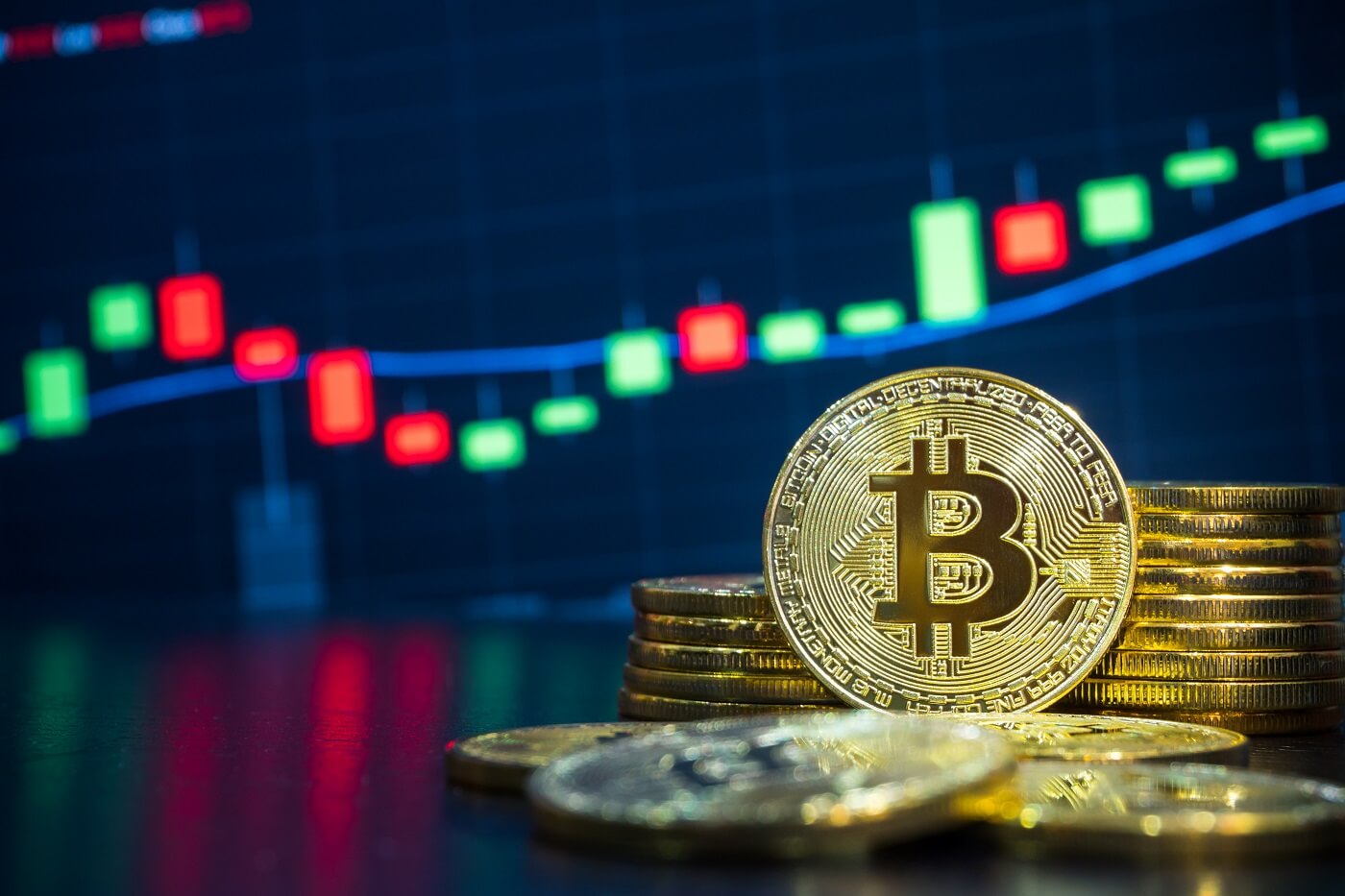Market
2024 saw crypto markets dramatically mature


2024 was a landmark year for the cryptocurrency market. It was a year when the market matured, barriers to the institutional investing world came down, and international regulations started to pave the way for digital currencies to enter the mainstream global financial system.
With a President-elect keen on making the US a global crypto hub, the market experienced significant growth. As crypto adoption rose, more users turned to crypto platforms and ETFs to invest. 2024 was a transformative experience for the crypto market and the blockchain technology that powers it.
The general public, buoyed by positive sentiment and rising crypto prices, has flocked to DeFi platforms to download their first wallet. Many of those new users have found their way to the highly trusted crypto brand Binance.
It takes a leader to help an industry continue to mature and Binance CEO Richard Teng has taken on that role throughout 2024’s massive growth. Teng commented on his leadership and the future, “we have served in the best interests of our users since day one, leading the industry’s standard and continue building the future of the industry responsibly.”
Binance accounts for approximately 50% of all trading volume globally. This number has only increased from Jan-Nov 2024. During the 2024 US Presidential election week, Binance captured $7.7 billion out of the $20 billion total inflows across all exchanges. Combine that with the leading crypto exchange reaching a new milestone surpassing 200 million users and safeguarding over $130 billion in user assets.

So, these are exciting times for the crypto industry that come off the back of a lot of hard work in 2024. The highlights of the year included:
Institutional Involvement and Widespread Adoption
In 2024, BlackRock launched its spot Bitcoin ETF IBIT, before bringing options to the table on November 19th 2024, and broke all the records on day one with 354,000 contracts traded and $1.9 billion in notional value. This was a landmark moment for the crypto industry, but it came at the end of a year of institutional investment.
Pension funds, hedge funds, and sovereign wealth funds have worked hard into crypto this year as they try to take advantage of the growth potential and protect against problems with fiat currency. They follow on the heels of Goldman Sachs, Morgan Stanley, and Fidelity Investments, who all offer Bitcoin as part of their Wealth Management services.
Institutional investment has curbed market volatility, and this year, Bitcoin emerged as one possible protection against inflation. New clarity with the regulations, improved custody solutions, and advanced risk management frameworks all gave the institutions the confidence to jump into crypto feet first in 2024.
The Rise and Rise of DeFi
Decentralized Finance (DeFi) is changing the world we live in and providing a real alternative to traditional banking. The world’s unbanked poor and privacy-obsessed High Net Worth Individuals alike have discovered the delights of downloading a crypto wallet and sending money with low fees and no questions.
According to one recent study, the global DeFi market should be worth almost $440 Billion in 2030, up from just over $20 billion in 2023.
We can now tokenize any asset, from real estate and fine art to cars and stocks, to create more liquidity without the help of a traditional bank. This is opening up new methods of borrowing, saving, lending, and earning interest that put the power in the hands of the people.
Unbanked individuals around the world can have access to basic financial services, including sending and receiving money from friends or families, without huge fees. We are also seeing an ecosystem of liquidity pools and borrowing facilities open up that can change the world of finance.
Retail Market Integration
In the background, the Web3 technology that underpins the crypto market has found a home with DeFi platforms, as well as retail and e-commerce. Blockchain technology is now the foundation of supply chain management, healthcare providers, and numerous company processes. If the blockchain continues to take over corporate and public life, then the tokenized crypto ecosystem has to go with it.
Retailers are increasingly relying on the blockchain, with Starbucks using it to trace their coffee from the farm to the cup and Nike tokenizing each pair of sneakers on its Swoosh platform for authenticity and traceability.
In October 2023, Ferrari started accepting crypto payments for its high-end sportscars, joining the likes of Tesla, PayPal, Shopify, and Microsoft. This is a slow process, but crypto has slowly acquired the social proof it requires to break through with mainstream retailers. The blockchain that forms its foundations and is becoming such a mainstream hit was an unexpected bonus.
Regulatory Frameworks: Chaos to Clarity
Fragmented regulations that change from country to country are terrible for the crypto industry, and 2024 was the year it finally got its house in order. The Financial Stability Board, International Monetary Fund, and World Economic Forum helped guide disparate countries towards one set of standard practices for crypto taxation, Anti Money Laundering compliance, and consumer protection. A simple foundation of regulations that works across borders could work wonders for the industry. We’re not there yet, but we are getting closer.
Technological Advancements Driving Maturity
It isn’t just the political landscape that had to change to give the crypto market a shot at mass adoption. Real technical issues with the early blockchain systems kept them as a niche interest rather than an everyday occurrence.
Blockchain congestion, slow transactions, high energy consumption, and scalability were all real issues. Ethereum 2.0 and Layer 2 solutions mean that Ethereum, the most ubiquitous blockchain by far when it comes to dApps and Web3 technology, is now much more scalable, with lower fees and less blockchain congestion. Solana and alternative blockchains like BNB Smart Chain also offer alternative solutions, with blockchain bridges seamlessly connecting the networks.
AI integration has already changed the world of trading, analytics, risk management, and supply chain management. Artificial Intelligence has unlocked another level of performance from Web3 technology and automated complex processes that can streamline almost any company.
Conclusion
These factors have all combined to create a market that is ready, willing, and waiting for mass adoption. Institutional adoption, regulatory clarity, cultural acceptance, and technical improvements have all helped the cryptocurrency industry go from a sideshow to a central player in 2024. We have not seen anything yet, and next year could be the biggest yet.
Market
Report Alleges Massive Meme Coin Sniping on Pump.fun

According to a new report from Pine Analytics, token deployers on Pump.fun systematically funded sniper wallets to buy their own meme coins. This impacted over 15,000 token launches on the platform.
These sniper wallets operated primarily during US trading hours, executing standardized, profitable strategies. Unrelated bot activity obscures their behavior, making it extremely difficult to isolate these wallets—and they can readily adapt to new countermeasures.
Snipers Roam Free on Pump.fun Meme Coins
Pump.fun has remained one of the most popular meme coin launchpads on Solana despite persistent controversies and other criticism.
However, Pine Analytics’ new report has uncovered a new controversy, discovering systematic market manipulation on the platform. These snipes include as much as 1.75% of all launch activity on Pump.fun.
“Our analysis reveals that this tactic is not rare or fringe — over the past month alone, more than 15,000 SOL in realized profit was extracted through this method, across 15,000+ launches involving 4,600+ sniper wallets and 10,400+ deployers. These wallets demonstrate unusually high success rates (87% of snipes were profitable), clean exits, and structured operational patterns,” it claimed.
Solana meme coin deployers on Pump.fun follow a consistent pattern. They fund one or more sniper wallets and grant them advance notice of upcoming token launches.
Those wallets purchase tokens in the very first block and then liquidate almost immediately—85% within five minutes and 90% in just one or two swap events.

Pump.fun meme coin developers exploit this tactic to create the appearance of immediate demand for their tokens. Retail investors, unaware of the prior sell‑off, often purchase these tokens after the snipe, giving developers an unfair advantage. This constitutes market manipulation and erodes trust in the platform.
Pine Analytics had to carefully calibrate its methods to identify genuine snipers. Apparently, 50% of meme coin launches on Pump.fun involve sniping, but most of this is probably bots using the “spray and pray” method.
However, by filtering out snipers with no direct links to developer wallets, the firm missed projects that covered their tracks through proxies and burners.
In other words, the meme coin community does not have adequate defenses against systematic abuse on Pump.fun. There are a few possible ways that the platform could flag repeat offenders and sketchy projects, but adaptive countermeasures could defeat them. This problem demands persistent and proactive action.
Unfortunately, it may be difficult to enact such policies. Meme coin sniping is so systematic that Pump.fun could only fight it with real commitment.
Analysts think that building an on-chain culture that rewards transparency over extraction is the best long-term solution. A shift like that would be truly seismic, and the meme coin sector might not survive it.
Disclaimer
In adherence to the Trust Project guidelines, BeInCrypto is committed to unbiased, transparent reporting. This news article aims to provide accurate, timely information. However, readers are advised to verify facts independently and consult with a professional before making any decisions based on this content. Please note that our Terms and Conditions, Privacy Policy, and Disclaimers have been updated.
Market
Solana Leads Blockchain Metrics as SOL Momentum Builds

Solana (SOL) continues to show strength across multiple fronts, maintaining a bullish structure on its Ichimoku Cloud chart while gaining momentum in key market metrics. The BBTrend indicator has turned higher again, signaling renewed buying pressure after a brief cooldown.
On-chain activity remains strong, with Solana leading all blockchains in DEX volume and dominating fee generation thanks to the explosive growth of meme coins and launchpad activity. With SOL now trading above a key resistance level, the path is open for further upside—though a loss of momentum could still trigger a retest of lower supports.
Solana Maintains Bullish Structure, but Momentum Faces Key Test
On Solana’s Ichimoku Cloud chart, the price is currently above the Kijun-sen (red base line) but has dipped below the Tenkan-sen (blue conversion line), signaling weakening short-term momentum.
The flattening Tenkan-sen and price behavior suggest possible consolidation or the early stages of a pullback. Still, with the price holding above the Kijun-sen, medium-term support remains intact.

The overall Ichimoku structure remains bullish, with a thick, rising cloud and leading span A well above span B—indicating strong underlying support.
If Solana finds support at the Kijun-sen and climbs back above the Tenkan-sen, the uptrend could regain strength; otherwise, a test of the cloud’s upper boundary may follow.

Meanwhile, Solana’s BBTrend is currently at 6, extending nearly ten days in positive territory after peaking at 17.5 on April 14. The recent increase from 4.26 to 6 suggests renewed bullish momentum following a brief cooldown.
BBTrend, or Bollinger Band Trend, tracks the strength of price movement based on Bollinger Band expansion.
Positive values like the current one point to an active uptrend, and if the BBTrend continues to rise, it could signal stronger momentum and potential for another upward move.
Solana Dominates DEX Volume and Fee Generation as Meme Coins Drive Ecosystem Growth
Solana has once again claimed the top spot among all chains in DEX volume, recording $15.15 billion over the past seven days. The combined total of Ethereum, BNB, Base, and Arbitrum reached $22.7 billion.

In the last 24 hours alone, Solana saw $1.67 billion in volume, largely fueled by its booming meme coin ecosystem and the ongoing launchpad battle between PumpFun and Raydium. Adding to this good momentum, Solana recently surpassed Ethereum in Staking Market Cap.

When it comes to application fees, Solana’s momentum is just as clear. Four of the top ten fee-generating apps over the past week—PumpFun, Jupiter, Jito, and Meteora—are Solana-focused.
Pump leads the pack with nearly $18 million in fees alone.
Solana Breaks Key Resistance as Uptrend Targets Higher Levels, but Risks Remain
Solana has finally broken above its key resistance at $136, flipping it into a new support level that was successfully tested just yesterday.
Its EMA lines remain aligned in a bullish setup, suggesting the uptrend is still intact.
If this momentum continues, SOL price could aim for the next resistance zones at $147 and $152—levels that, if breached, open the door to a potential move toward $179.

The current structure favors buyers, with higher lows and strong support reinforcing the trend.
However, if momentum fades, a retest of the $136 support is likely.
A breakdown below that level could shift sentiment, exposing Solana to deeper pullbacks toward $124 and even $112.
Disclaimer
In line with the Trust Project guidelines, this price analysis article is for informational purposes only and should not be considered financial or investment advice. BeInCrypto is committed to accurate, unbiased reporting, but market conditions are subject to change without notice. Always conduct your own research and consult with a professional before making any financial decisions. Please note that our Terms and Conditions, Privacy Policy, and Disclaimers have been updated.
Market
Crypto Firms Donated $85 million in Trump’s Inauguration

According to a new report, 15 firms and individuals from the crypto industry donated more than $100,000 to President Trump’s Inauguration, totaling over $85 million.
Almost all of these companies apparently received direct or indirect benefits from Trump’s administration. This includes dropped legal proceedings, lucrative business partnerships, participation in Trump’s Crypto Summit, and more.
Crypto Industry Went All-In on Trump’s Inauguration
Since promising to bring friendlier regulations on the campaign trail, Donald Trump attracted a reputation as the Crypto President.
Trump’s Inauguration festivities included a “Crypto Ball,” and several prominent firms made donations for these events. Today, a report has compiled all crypto-related contributions of over $100,000, revealing some interesting facts.

Since taking office, President Trump and his family have been allegedly involved in prominent crypto controversies, and these donations may be linked to several of them.
For example, eight of the donors, Coinbase, Crypto.com, Uniswap, Yuga Labs, Kraken, Ripple, Robinhood, and Consensys, had SEC investigations or lawsuits against them closed since Trump’s term began.
The commission might have dropped its probe against these companies anyway due to its changing stance on crypto enforcement. However, being in the President’s good books likely helped the process.
Further Alleged Benefits for Donors
In other words, nearly half the firms that made donations to Trump’s Inauguration have seen their legal problems cleared up quickly. This isn’t the only regulation-related benefit they allegedly received.
Circle, for example, recently made an IPO after openly stating that Trump’s Presidency made it possible. Galaxy Digital received SEC approval for a major reorganization, a key step for a NASDAQ listing.
Other donors, such as Crypto.com and ONDO, got more direct financial partnerships with businesses associated with the Trump family.
Previously, Ripple’s CEO, Brad Garlinghouse, anticipated a crypto bull market under Trump. Also, XRP, Solana, and Cardano were all unexpectedly included in the US Crypto Reserve announcement.
All three of these companies made major donations to Trump’s Inauguration.
It seems that most of the firms involved got at least some sort of noticeable benefit from these donations. Donors like Multicoin and Paradigm received invitations to Trump’s Crypto Summit, while much more prominent groups like the Ethereum Foundation got snubbed.
Meanwhile, various industry KOLs and community members have already alleged major corruption in Trump’s crypto connections.
While some allegations might lack substantial proof, the crypto space has changed dramatically under the new administration, for both good and bad.
Disclaimer
In adherence to the Trust Project guidelines, BeInCrypto is committed to unbiased, transparent reporting. This news article aims to provide accurate, timely information. However, readers are advised to verify facts independently and consult with a professional before making any decisions based on this content. Please note that our Terms and Conditions, Privacy Policy, and Disclaimers have been updated.
























